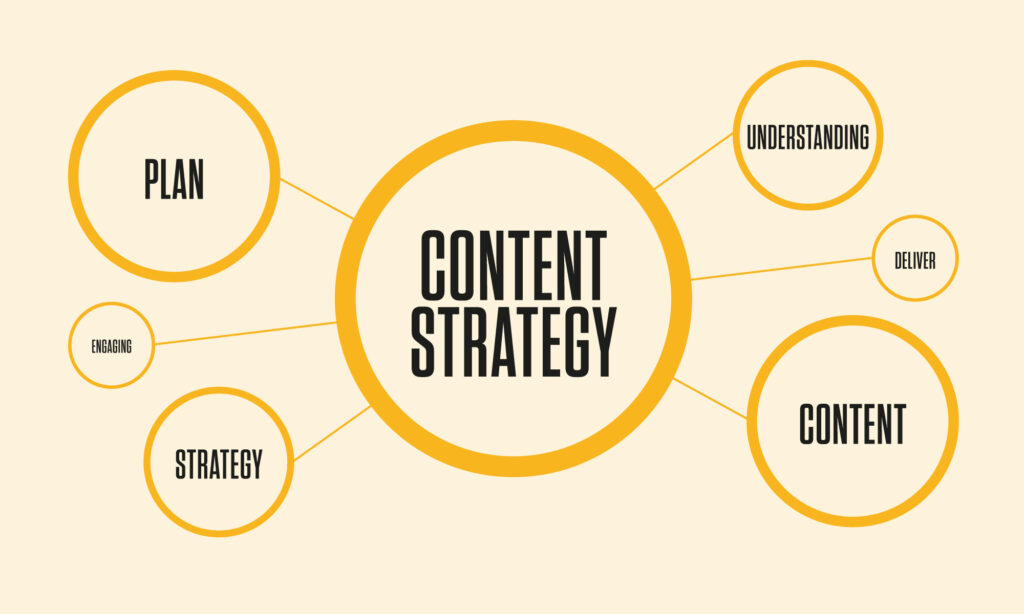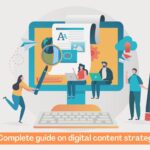A digital content strategy is a plan that helps a business create and distribute digital content to reach new audiences, build greater credibility, generate more leads and achieve its overall strategic marketing objectives. Although it may sound like a trick question, recent research has provided tangible, practical answers that can help firms make smarter marketing decisions. And, as a result of these results, every professional services firm requires a digital content strategy to address the way modern buyers seek professional advice and services.

Many “tried-and-true” marketing strategies (think sponsorships, face-to-face networking events, print advertising, and trade exhibits) no longer produce enough results to sustain a growing business. Even companies that embrace online marketing frequently get it wrong, wasting time and money.
So, how should you promote your business? And where should your marketing expenditure be spent?
We need to understand how purchasers behave in today’s market before we can answer such questions.
A Marketplace in Transition
The way individuals look for and choose professional services is rapidly changing. And how businesses like yours should approach marketing has changed as a result of this shift.
For example, today’s service buyers are less likely than in the past to request referrals. Over a five-year span, referrals fell by 16 percent. As the corporate world advances, the almighty recommendation, which has been the holy grail of business development for so many decades, is beginning to lose its prominence.
They also claim that these services are more relevant than ever before (a 56 percent increase). Clients, on the other hand, are becoming less loyal to their professional services firms (down 20 percent ). (Data from the research report Inside the Buyer’s Brain, Third Edition.)
Read more – What is a digital marketing strategy explained by an expert team?
What’s happening?
As younger generations who are more comfortable with technology move into companies’ buyer and influencer roles. They bring different behaviors and expectations with them. They’re used to using Google and social media tools at home. So they come to work expecting to find the same valuable, free advice online, as well as an array of easy-to-find buying options.
The tools they use to vet their buying options are reviewing potential vendors’ websites and asking peers in social media for their opinions and experiences. The data is clear: buyers are turning to the internet more and more for help with their business decisions.
In fact, they’re doing it 66% more than they were just last year. And as digital tools get better and better at meeting buyers’ needs, it’s likely that this trend will continue.
Defined Digital Content Strategy

A digital content strategy is a strategy for a company to create and distribute . Digital content in order to reach new audiences, increase credibility, generate more leads, and meet its overall strategic marketing goals.
This strategy connects businesses with the growing number of potential buyers who are turning to digital tools and searching the web for solutions to their business problems.
It’s usually part of a wider content marketing campaign that includes non-digital methods like public speaking and book publishing.
Blog entries, online articles, webinars, educational videos, online tutorials, courses, and podcasts are all examples of digital content. Because creating content takes time, many methods only contain a portion of these alternatives.
A digital content strategy, on the other hand, is more than just a collection of articles. A plan also determines what themes the pieces will cover, how frequently they will be generated. How they will be distributed to the proper audiences, and how each piece of content will be able to convert a consumer into a business lead.
Learn More: The Philosophy Of CRYPTOCURRENCY
Why Is Digital Content Important?

Today’s buyers are increasingly going online to find their next professional services partner. While in some cases this means they searched online for their problem and Google returned a list of possible vendors, more often than not the path from problem to problem solved is longer and less direct.
A professional services sale can take months or years to develop. When businesses have less urgent problems. They tend to allocate fewer resources to them—often going online to research the problem and potential solutions. In the process, they encounter websites, blogs and free educational materials that put their problem in context and describe various solutions.
Some customers will come back for further information and assistance after discovering a source of expertise they trust. A digital content strategy is so successful because of this habit.
These returning consumers (we use the term “consumers” rather than “readers” because the content they consume can be text, video, or audio) come to rely on and trust their information source over time. When a business difficulty arises, one company will come to mind right away—the one they’ve been watching for months or years.
A Digital Content Strategy’s Components
DEFINE YOUR BUSINESS GOALS
Your digital content plan, like any other business strategy, must begin with your objectives. And, if you don’t have any clear goals right now, consider what you’d like to alter about your company. Here are a few questions to get you started:
- Do we really want greater quality leads?
- Do we wish to increase our geographic reach into new markets? Or do we want to increase our local market share?
- Is our reputation in need of a boost?
- Do we intend to shift away from commodity pricing and charge a premium for our services?
- Do we want to grow our company and become known for a new set of services?
- Are we attempting to expand our company? Or should we concentrate on increasing our profit margins?
Whatever your business objectives are, you may use them to guide your strategy and determine whether a given action, tactic, or instrument will help you get closer to your goal. With these objectives in mind, you’ll have a better idea of what metrics and results you’ll need to track.
( Learn more – Best small business software )
PERFORM A AUDIENCE ANALYSIS
You’ll need to create content that your potential clients are interested in in order to deliver an effective digital content strategy. And, aside from mindreading, the only surefire way to get into their brains is to undertake audience research.
We’ve discovered at Hinge that most organizations have no actual understanding of their clients’ evolving needs. They can understand what concerns are relevant today, what clients are concerned about in the near future, and what services they wish you supplied by conducting research.
Not that every study is the same. To gain relevant insights, you must first decide what type of study you will undertake. Only two forms of research are recommended to understand your audience:
- Surveys. Quantitative research’s king While paper surveys aren’t completely obsolete, the majority of surveys are now conducted online. You can branch your questions based on how a respondent replies, randomize the order of questions, issue automated invites and reminders, and use other valuable tools using online survey platforms.
- Interviews. For good reason, live interviews are the gold standard in qualitative research: they allow the interviewer to ask follow-up questions and delve deeper when there is more to discover. In contrast to a normal text-based survey, interviewees tend to provide more extensive and nuanced responses. While conducting interviews in person is possible, it is far more practical to conduct them over the phone (or video conference).
If you can afford it, we recommend going the interview route. Personal interviews are more expensive than online surveys, but they produce the highest quality data. Surveys, on the other hand, can yield a wealth of important information. Use both strategies to get the best of both worlds—you’ll be able to reach a huge sample and get rich qualitative insights.
People Also Read
What is the Point of Buying USD and How Can I Use it?
The Complete Guide to Uncovering Bitcoin
10 essential privacy and security tips for Zoom
HOW TO MAKE 500 DOLLARS FAST IN LESS THAN A WEEK
The Complete Guide to Apps That Pay to Invest Money Online
10 Most Popular Types Of White Flowering Plants
An Overview of Solar Panel Systems for Energy Efficiency and Save the Planet
CRYPTOCURRENCY: Are You Prepared For A Good Thing?
How To Start A Business With Only Bitcoin – Cryptoees
Contrast Between Windows 10 Cumulative And Feature Updates
Easy ways to make money online without investing

